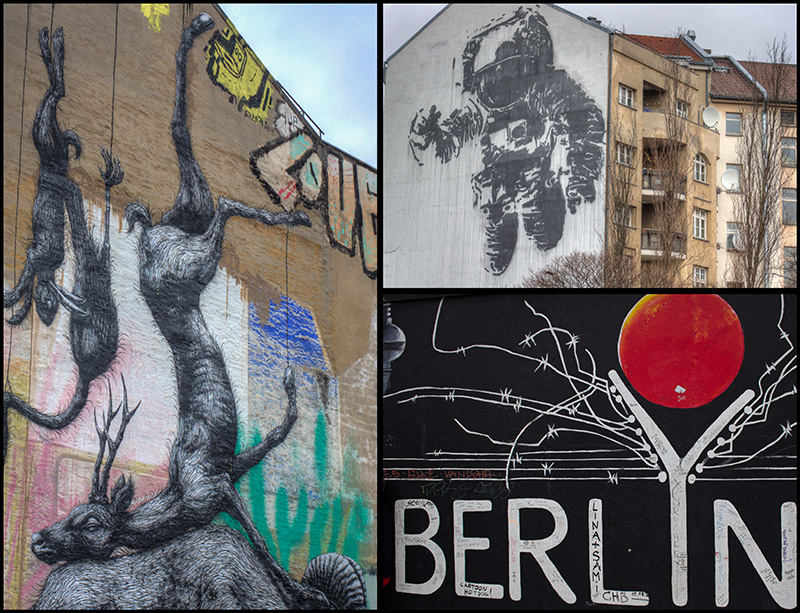An artist's creative journey in learning new media. An inner look at the creative process at work when an artist explores new media.
Sunday, April 27, 2014
Rabbit's Moon studio: A STROKE OF INSIGHT
Rabbit's Moon studio: A STROKE OF INSIGHT: Part 1 of a three part series OUR ART IS AFFECTED BY OUR PERCEPTIONS OUR PERCEPTIONS ARE DETERMINED BY OUR BRAIN FUNCTION AND OUR BR...
A STROKE OF INSIGHT
Part 1 of a three part series
OUR ART IS AFFECTED BY OUR PERCEPTIONS
OUR PERCEPTIONS ARE DETERMINED BY OUR BRAIN FUNCTION
AND OUR BRAINS FUNCTION IS DETERMINED BY ITS STRUCTURE, ITS HEALTH, AND ITS INJURIES
DAVID HOCKNEY AND CHUCK CLOSE
THE TERM A STOKE OF INSIGHT COMES FROM A BOOK
My Stroke of Insight by Jill Bolte Taylor.
Click on the arrow in the center of the screen below to watch
video of Jill Bolte Tayor speaking brain function.
I became very interested in how the brain functions many, many years ago when I was teaching special education. I taught, blind, deaf, autistic and severely mentally handicapped students. In one way or another some senses or all were effected in this students. I had children who were idiot savants and could do the most amazing things, like give the day of a chosen day into the future or past in seconds. One part of their brain functioned at an abnormally high rate. I also had students who had a mental capacity of 3 months old or less, but in actual age may be up to 19 years old. I wanted to know how the brain would still function at the lowest levels and how. I found out some amazing things in those years. I was surprised myself, at what choices a person of the most limited intelligence could make and how their personality was still very much intact. I had one profoundly handicapped student who was about 17. It took me and two aides to help her to manipulate her limbs to do art, but she consistently chose cool colors…green, blue, purple…month to month, year to year. She had a decided preference for cool colors and she had a talent for art, even in the most basic form.
Moving forward years later, I am as I neared the end of my art teaching career my Mother had a stroke. My Mother had a massive hemorraghic stroke, which is like a deep, bleeding in the center of the brain. She could read not long after the stroke, but she was not able to attach meaning to the words. Strokes seem to run in our family, my Mother's Mother had a stroke and then my Mother. My two cousins both have had several strokes. It is devastating to see in someone you love, but it also made me thing deeply about the brain and what a person experiences, what they feel, what they sense and what they remember. I think the scientist in my Mother would have been proud of that. I was taught to observe and analyze growing up.
David Hockney's(click for article)
article in the Guardian is one I wanted to share with you.
"I had had a very minor stroke that had kept me in London, and the first drawing afterwards took me two days to do (the days are a lot shorter in November). The stroke only manifested itself in my speech. I found I couldn't finish sentences, and although it came back after about a month I find now I talk a lot less."
"But it did not affect my drawing. I think it even made me concentrate more. I thought, well I'm OK so long as I can draw, I don't really need to say much any more; I thought, I've said enough already."
Chuck Close
Though Chuck Close did not have a stroke, the seizures and paralysis no doubt have affected his thinking in many ways. He has found ways to compensate and overcome his disabilities. In some respects his art is more interesting now than ever.
OUR ART IS AFFECTED BY OUR PERCEPTIONS
OUR PERCEPTIONS ARE DETERMINED BY OUR BRAIN FUNCTION
AND OUR BRAINS FUNCTION IS DETERMINED BY ITS STRUCTURE, ITS HEALTH, AND ITS INJURIES
DAVID HOCKNEY AND CHUCK CLOSE
 |
| David Hockney, British from Google |
 |
| Chuck Close, American from google |
are two artist who have continued to produce art after having severe disabilities. David Hockney had a stroke and Chuck Close suffered seizures that paralyzed him from the waist down. Brain research and function is fascinating, especially if one is an artist. A recent article in the Guardian about David Hockney renewed my interest in this area.
My Stroke of Insight by Jill Bolte Taylor.
Click on the arrow in the center of the screen below to watch
video of Jill Bolte Tayor speaking brain function.
The book was written by a Jill Bolte Taylor who specialized in research of neurological effects of people who experienced strokes. Then she had a stroke of her own. After her recovery she wrote a book called, My Stroke of Insight. She talked about how her brain functioned differently after the stroke. Her perceptions were different, her sensations were different, and her ability to stand stimulation.
 |
| My Mother, Lela and me |
David Hockney's(click for article)
article in the Guardian is one I wanted to share with you.
"I had had a very minor stroke that had kept me in London, and the first drawing afterwards took me two days to do (the days are a lot shorter in November). The stroke only manifested itself in my speech. I found I couldn't finish sentences, and although it came back after about a month I find now I talk a lot less."
"But it did not affect my drawing. I think it even made me concentrate more. I thought, well I'm OK so long as I can draw, I don't really need to say much any more; I thought, I've said enough already."
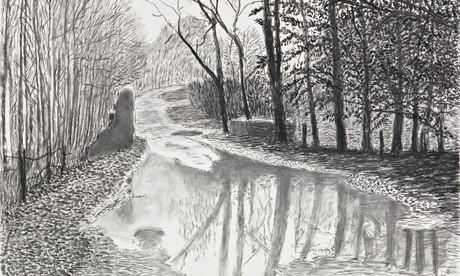 |
| David Hockney's Yorkshire Spring Drawings after the stroke from google image only for educational purposes |
Chuck Close
 |
| Detail of portrait on right from google |
 |
| Chuck Closes work after accident It is much more highly pixilated and abstracted. I find it almost more interesting than his previous work. |
Though Chuck Close did not have a stroke, the seizures and paralysis no doubt have affected his thinking in many ways. He has found ways to compensate and overcome his disabilities. In some respects his art is more interesting now than ever.
 |
| Chuck Close after Spinal Collapse still a master! from google image |
"In 1988, Close again experienced the trauma of a severe health issue when he suffered the sudden rupture of a spinal artery. In the immediate aftermath of the incident, Close was left almost entirely paralyzed. Eventually, after rounds of physical therapy, Close, who became permanently confined to a wheelchair, regained the partial use of his limbs.
Despite the physical limitations, Close pressed forward with his work. With a brush taped to his wrist, Close continued to paint, but in a style that was more abstract and less precise. His reputation and standing have not suffered in the least" Quoted from Wikapedia
Labels:
art and the brain,
Brain function,
Chuck Close,
David Hockney,
Jill Bolte Taylor,
My Stroke of Insight
Saturday, April 26, 2014
ARTISTS BRAINS MAY BE STRUCTURED DIFFERENTLY!
Artists Brains May be Different
Now before all the jokes start about artist are weird and their wires are probably crossed lets look at some of the later thinking in brain research. Below is a partial statement from and article written for Hyperallergenic… click for whole article.
 |
| From google image for education purposes only |
Now before all the jokes start about artist are weird and their wires are probably crossed lets look at some of the later thinking in brain research. Below is a partial statement from and article written for Hyperallergenic… click for whole article.
(Artists are often deemed “right-brained” thinkers, but new research suggests it may be the actual structure of the brain that lends creative talent.
“Drawing on the right side of the brain: A voxel-based morphometry analysis of observational drawing” was published last month in the peer-reviewed neuroimaging journal NeuroImage. As the study states, ”structural brain differences in relation to expertise have been demonstrated in a number of domains including visual perception, spatial navigation, complex motor skills, and musical ability. However no studies have assessed the structural differences associated with representational skills in visual art.”)
I find this fascinating because of growing up I knew my brained worked differently, but it took a long time for me to understand this and how to learn in the ways my brain would function. Many SLD classes, most art teachers will tell you are people who are just visual learners.
Any number of children struggle in school because the teaching modalities do not fit their learning style. It is time we look at the newest research and see how we must structure our learning for and how.
Monday, April 21, 2014
BEST CITIES TO SEE STREET ART
Huffington Post Art has put out a list of the 26 Best Cities to see street Art. Here is the link for you_ Best Street Art Cities
BERLIN, GERMANY
SAN PALO, BRAZIL
CAPE TOWN, SOUTH AFRICA
Melbourne, Australia
MOSCOW, RUSSIA
*all images are from google image only for educational purposes
There are many wonderful cities not mentioned in Huffington Post Arts, one of my favorites not mentioned is Philadelphia, Penn. They have three separate full day tours one can take to see the huge number of excellent murals done there.
So if you city is not mentioned please send me a post and I will be glad to include them in the blog. My aim is art education, supporting artists, and art advocacy.
BERLIN, GERMANY
SAN PALO, BRAZIL
CAPE TOWN, SOUTH AFRICA
Melbourne, Australia
MOSCOW, RUSSIA
*all images are from google image only for educational purposes
There are many wonderful cities not mentioned in Huffington Post Arts, one of my favorites not mentioned is Philadelphia, Penn. They have three separate full day tours one can take to see the huge number of excellent murals done there.
So if you city is not mentioned please send me a post and I will be glad to include them in the blog. My aim is art education, supporting artists, and art advocacy.
New Work in Preparation of an Assemblage
Trying different raku glazes for color and texture.
The first mask has a green glaze that turns copper like in many areas that do not receive as much oxidation, while the white crackle has large areas I masked off with wet paper, which burns off in the firing, giving large areas of charcoal black with white crackle.
Friday, April 18, 2014
LOOKING AT LIFE ON BOTH SIDES NOW!
WE WERE RIDING THOUGH ASHEVILLE
AND IT STARTED TO RAIN
A COLD FRONT COMING THROUGH
WHILE ERRANDS WERE BEING DONE
AND GOT A LITTLE BORED.
I LOOKED OUT THE CAR WINDOW
AND HOW THE RAIN DISTORTED THE VIEW.
AT FAMILIAR OBJECTS IN AN ABSTRACT WAY
AND OTHER FRENCH IMPRESSIONIST AS WELL,
MONET
CAILLEBOTTE
STOP
TAKE TIME
CREATE
BE IN THE MOMENT
THINK
PS. Photo's taken with little point and shoot Lumix by Panasonic. Love this little camera. It has a leica lens and 20x zoom, but fits in my pocket.
Labels:
abstract art,
Asheville,
blurred photos,
Caillebotte,
French Impressionists,
lumix camera,
Monet
Tuesday, April 15, 2014
Rabbit's Moon studio: PHOTO JOURNALIST, BRAVE ARTIST
Rabbit's Moon studio: PHOTO JOURNALIST, BRAVE ARTIST: Continuation of Vietnam Photo Journalists, Artists at War MALCOM BROWNE'S PULITZER PRIZE WINNING PHOTO FROM VIETNAM The Burning M...
Monday, April 14, 2014
PHOTO JOURNALIST, BRAVE ARTIST
Continuation of Vietnam Photo Journalists, Artists at War
MALCOM BROWNE'S PULITZER PRIZE WINNING PHOTO FROM VIETNAM
Malcom Browne
Malcom Browne's iconic photo of a monk setting himself to flame, and burning himself in protest of the Vietnamese war, was one of the most famous images to come out of the Vietnamese conflict. The act of the Monk's immolation is a horrible event and to capture it in such detailed form as it actually happened was shocking to American's and the world. It makes me want to know more about the story behind this picture, and I imagine you might feel the same… What would bring someone to the point of burning themselves in protest and why!?
To understand more about the story I researched the internet and found this reference below: " On 10 June 1963 Buddhist Monk Thich Quang Duc set himself on fire in protest over the governments treatment of Buddhist Monks in Vietnam. After reading the article about Malcom Browne and the Burning Monk i wondered if there was a monument of Quang Duc in Saigon. I wasn't expecting to find anything as there aren't as many war monuments as I thought there would bek
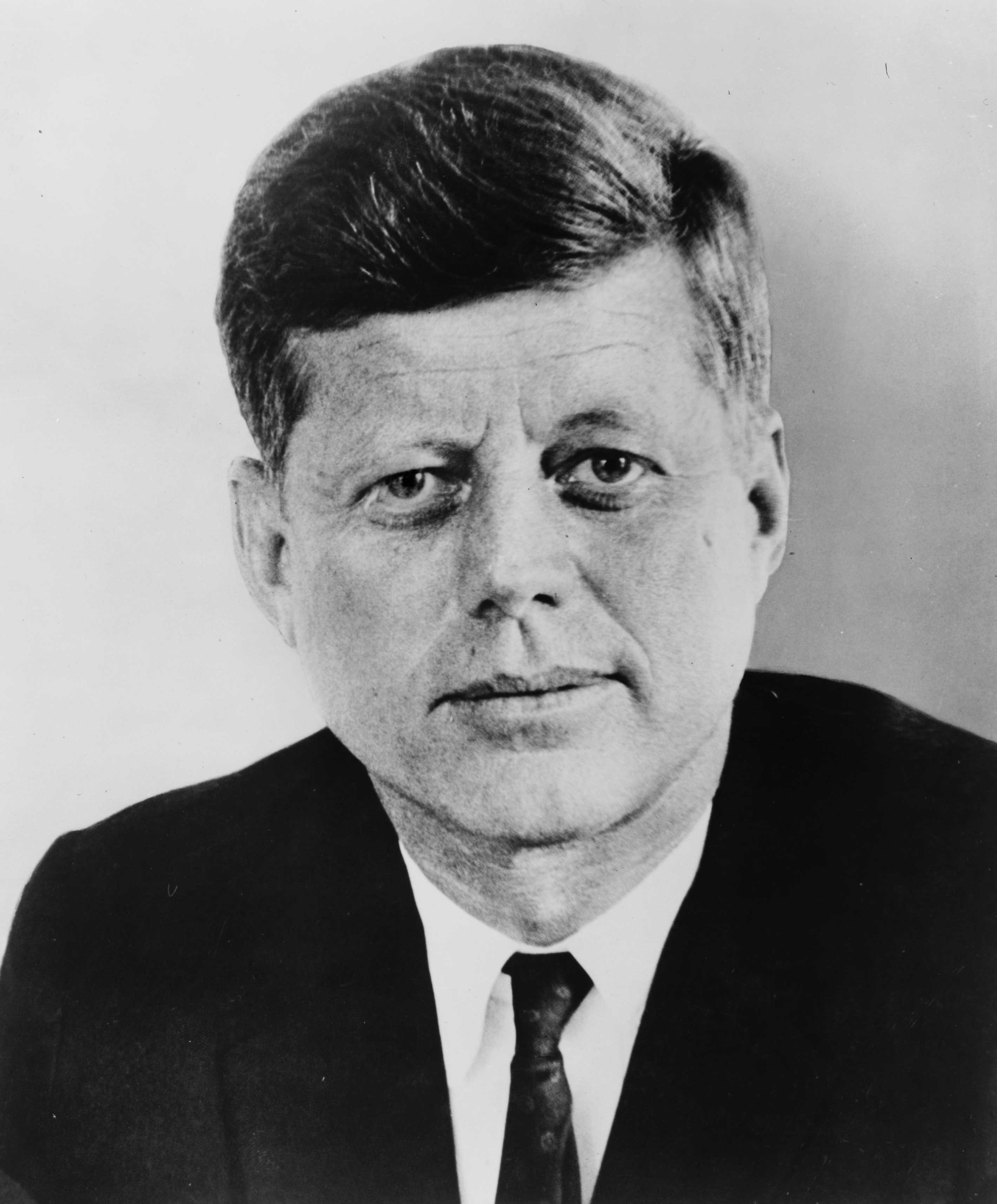 "On 10 June 1963 Buddhist monk Thich Quang Duc set himself alight in protest offer the governments treatment towards Buddhist. After reading the article about Malcom Browne and the burning monk I wondered if there was a monument for Quang Duc. I wasn't expecting to find anything as there aren't as many war monuments as I thought there would be in the city. So I was surprised to find one of the most impressive memorial parks to one person I have ever seen." quote by James Clark from article on photo journalists of Vietnamese War.
"On 10 June 1963 Buddhist monk Thich Quang Duc set himself alight in protest offer the governments treatment towards Buddhist. After reading the article about Malcom Browne and the burning monk I wondered if there was a monument for Quang Duc. I wasn't expecting to find anything as there aren't as many war monuments as I thought there would be in the city. So I was surprised to find one of the most impressive memorial parks to one person I have ever seen." quote by James Clark from article on photo journalists of Vietnamese War.
Upon hearing of the event President John F. Kennedy said, " No news picture in history has generated so much emotion around the world as that one". U. S. Senator Frank Church claimed "sush grisly scenes have not been witnessed since the Christian martyrs marching hand in hand into the arena into the room.
In thinking about this famous photograph by Malcom Brown,
Art is so often a expression and a reflection of the culture and time we live in. I think in this time, the Vietnamese war, we see a conflict of cultures within the country and other foreign influences as the United States. I will leave it to you to contemplate the complexities and meanings that may come forth. There were so many independent factors from individuals to the government. All these paths led Malcom Browne that day to this spot to record history in one iconic photograph and a resulting sculpture and park. Without the exquisite talent of Malcom Browne and without the sacrifice of Thitch Quang Duc none of this would have been known to the world nor immortalized in a bronze sculpture for all times.
MALCOM BROWNE'S PULITZER PRIZE WINNING PHOTO FROM VIETNAM
 |
| The Burning Monk by Malcom Browne Pulitzer Prize Winning Photo from google for education |
Malcom Browne's iconic photo of a monk setting himself to flame, and burning himself in protest of the Vietnamese war, was one of the most famous images to come out of the Vietnamese conflict. The act of the Monk's immolation is a horrible event and to capture it in such detailed form as it actually happened was shocking to American's and the world. It makes me want to know more about the story behind this picture, and I imagine you might feel the same… What would bring someone to the point of burning themselves in protest and why!?
 |
| Sculpture of Thitch Quang Duc, The Burning Monk Saigon |
To understand more about the story I researched the internet and found this reference below: " On 10 June 1963 Buddhist Monk Thich Quang Duc set himself on fire in protest over the governments treatment of Buddhist Monks in Vietnam. After reading the article about Malcom Browne and the Burning Monk i wondered if there was a monument of Quang Duc in Saigon. I wasn't expecting to find anything as there aren't as many war monuments as I thought there would bek
 "On 10 June 1963 Buddhist monk Thich Quang Duc set himself alight in protest offer the governments treatment towards Buddhist. After reading the article about Malcom Browne and the burning monk I wondered if there was a monument for Quang Duc. I wasn't expecting to find anything as there aren't as many war monuments as I thought there would be in the city. So I was surprised to find one of the most impressive memorial parks to one person I have ever seen." quote by James Clark from article on photo journalists of Vietnamese War.
"On 10 June 1963 Buddhist monk Thich Quang Duc set himself alight in protest offer the governments treatment towards Buddhist. After reading the article about Malcom Browne and the burning monk I wondered if there was a monument for Quang Duc. I wasn't expecting to find anything as there aren't as many war monuments as I thought there would be in the city. So I was surprised to find one of the most impressive memorial parks to one person I have ever seen." quote by James Clark from article on photo journalists of Vietnamese War.Upon hearing of the event President John F. Kennedy said, " No news picture in history has generated so much emotion around the world as that one". U. S. Senator Frank Church claimed "sush grisly scenes have not been witnessed since the Christian martyrs marching hand in hand into the arena into the room.
In thinking about this famous photograph by Malcom Brown,
Art is so often a expression and a reflection of the culture and time we live in. I think in this time, the Vietnamese war, we see a conflict of cultures within the country and other foreign influences as the United States. I will leave it to you to contemplate the complexities and meanings that may come forth. There were so many independent factors from individuals to the government. All these paths led Malcom Browne that day to this spot to record history in one iconic photograph and a resulting sculpture and park. Without the exquisite talent of Malcom Browne and without the sacrifice of Thitch Quang Duc none of this would have been known to the world nor immortalized in a bronze sculpture for all times.
Thursday, April 10, 2014
BRAVE AND ARTIST
THE PHOTO JOURNALISTS OF THE VIETNAMESE WAR
"GOOOOD MORNING VIETNAAM!"
BY ROBIN WILLIAMS
" Like Van Es, many of us who covered the war found ourselves forever in the grip of Vietnam. No other story, no other war, quite measured up. The exotic charm and dangerous undercurrents of Saigon were seductive, the adrenaline rush of survival intoxicating. We hitchhiked around the country on military helicopters and roamed the battlefields without censorship. The Associated Press lists 73 of our colleagues as killed in South Vietnam, Cambodia, and Laos, yet as individuals we felt invulnerable" by David Lamb, Smithsonian Magazine
The photo journalist is part documenter, reporter, and artist. They must have the skill of a professional photographer, the ability to be a news reporter in the field, and an artist in the images they capture. And in addition to that they had to have nerves of steel to go into the jungles, and rice patties, on the front line where the battles raged.
Vietnam was the first war censorship was not a factor, as in World War II and later wars. It opened up freedom to the taking of photo's that revealed the true war and the conditions our soldiers were enduring. It allowed the truth to be told in black and white pictures in the press daily. Moving film was sent daily into the living rooms of Americans across the country and the ever famous body count.
Photo Journalists in the Vietnamese war(click for more info.)
were remarkable men who risked their lives, many died trying to get the right picture to show the conflict, the confusion, doubt, violence, and despair of the men who fought this war and the tragedy of war on both sides. Who are some of these remarkable men and what photographs are they known for? Lets take a look at a few. Every name is clickable to link you to more information on each photo journalist. Not all photo journalists will be covered in this post, we will continue until we have covered the most mentioned of the period.
I thought we would start with a film from You Tube which shows the feel of this war for the soldiers, news reporters, and photo journalist. To appreciate what they did to report the war and risks their lives for the photographs they took it is important we put ourselves back in that time and place. This film does that fairly well. It is a long video, you may want to watch parts and come later to the whole film. I think the absolute violence of war is beyond anyones understanding unless they have been there, but film and photo's help bring it closer for us to understand. I remember being absolutely riveted by the opening scene is Saving Private Ryan, where the sounds and speed with which things happened is almost unbelievable. Film below…..
Eddie Adams
Larry Burrows
Van Es
Dickey Chapelle
"Dickey Chapelle covered the battles of Iwo Jima and Okinawa for National Geography, was captured and jailed for seven weeks covering the Hungarian uprising for Life. In the meantime, she learned to fly an airplane and jump with paratroopers. She arrived in Vietnam in the early '60's and described her early experiences in her 1962 book "What's a Woman Doing Here?" On November 4, 1965 when on patrol with a Marine platoon, the soldier in front of Chapelle activated a booby trap( a mortar shell with a hand grenade The explosion hurled Chapelle off her feet, and a piece of the shrapnel slit her carotid artery, wounding her mortally."
Dick Ut
The video below is from Rolling Stone Magazine, called Paint it Black. It shows the division and frustration of a nation at war.
The music and art of the period reflects the culture and mood of the times.
Click here for a list of songs about the Vietnam War
Click here for a list of films about the Vietnam War
Horst Faas
Fred Waters
Frank Capa
"While collectively news photography from Vietnam
constituted a potent archive of a new kind of photography suited to a new kind of war and produced imagery that challenged the ideology and course of the American mission, a great deal of work was produced as spot news imagery with a conventionalized form of professional practice.
There were, however, notable exceptions, photographers who worked more self-consciously to push the boundaries of photojournalistic practice. Their work reflects on the contexts and scenery of war and, while these had varied motivations and were often constrained by the broader media and state frames, they did develop the genre of photojournalism, adapting it to new conditions of warfare and technological production.
These photographers produced a more meditative form of photojournalism, an afterimagery of conflicts and contexts, bound not to spot news reporting but to a more investigative framing of events. I am thinking here of photographers such as Larry Burrows, Philip Jones Griffiths, Don McCullin, Catherine Leroy, Kyoichi Sawada and Henri Huet.
In Vietnam, photographers had opportunities to develop a fresh visual awareness about war and its representations, especially those who stayed for long periods or who came with investigative intent. Within the mass visual coverage of this war were examples o
f this new awareness, the work of photographers reflexively attuned to the style and ethos of their work as a subjective register of their relation to the war. These photographers opened up opportunities for a more expressive form of documentary representation and influenced the style of a new generation of photojournalists who emerged to prominence in the 1970s and 1980s."
article source and quote from Liam Kennedy, Clinton Institute
Louis Armstrong…what a Beautiful World in concert in Vietnam
click below.
"GOOOOD MORNING VIETNAAM!"
BY ROBIN WILLIAMS
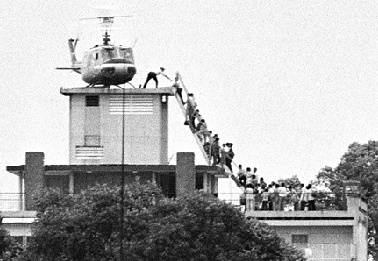 |
| Iconic Image By Van Es, Photo journalist of Vietnamese War The Last Helicopter Leaving Vietnam from google for the sole purpose of education and art advocacy |
" Like Van Es, many of us who covered the war found ourselves forever in the grip of Vietnam. No other story, no other war, quite measured up. The exotic charm and dangerous undercurrents of Saigon were seductive, the adrenaline rush of survival intoxicating. We hitchhiked around the country on military helicopters and roamed the battlefields without censorship. The Associated Press lists 73 of our colleagues as killed in South Vietnam, Cambodia, and Laos, yet as individuals we felt invulnerable" by David Lamb, Smithsonian Magazine
The photo journalist is part documenter, reporter, and artist. They must have the skill of a professional photographer, the ability to be a news reporter in the field, and an artist in the images they capture. And in addition to that they had to have nerves of steel to go into the jungles, and rice patties, on the front line where the battles raged.
Vietnam was the first war censorship was not a factor, as in World War II and later wars. It opened up freedom to the taking of photo's that revealed the true war and the conditions our soldiers were enduring. It allowed the truth to be told in black and white pictures in the press daily. Moving film was sent daily into the living rooms of Americans across the country and the ever famous body count.
Photo Journalists in the Vietnamese war(click for more info.)
were remarkable men who risked their lives, many died trying to get the right picture to show the conflict, the confusion, doubt, violence, and despair of the men who fought this war and the tragedy of war on both sides. Who are some of these remarkable men and what photographs are they known for? Lets take a look at a few. Every name is clickable to link you to more information on each photo journalist. Not all photo journalists will be covered in this post, we will continue until we have covered the most mentioned of the period.
 |
| Poster Protest Art of the Vietnamese War at home from google for education only |
 |
| Poster Art from Army Recruiters from google for education only |
I thought we would start with a film from You Tube which shows the feel of this war for the soldiers, news reporters, and photo journalist. To appreciate what they did to report the war and risks their lives for the photographs they took it is important we put ourselves back in that time and place. This film does that fairly well. It is a long video, you may want to watch parts and come later to the whole film. I think the absolute violence of war is beyond anyones understanding unless they have been there, but film and photo's help bring it closer for us to understand. I remember being absolutely riveted by the opening scene is Saving Private Ryan, where the sounds and speed with which things happened is almost unbelievable. Film below…..
Eddie Adams
 |
| Eddie Adams from google sole purpose is education |
Larry Burrows
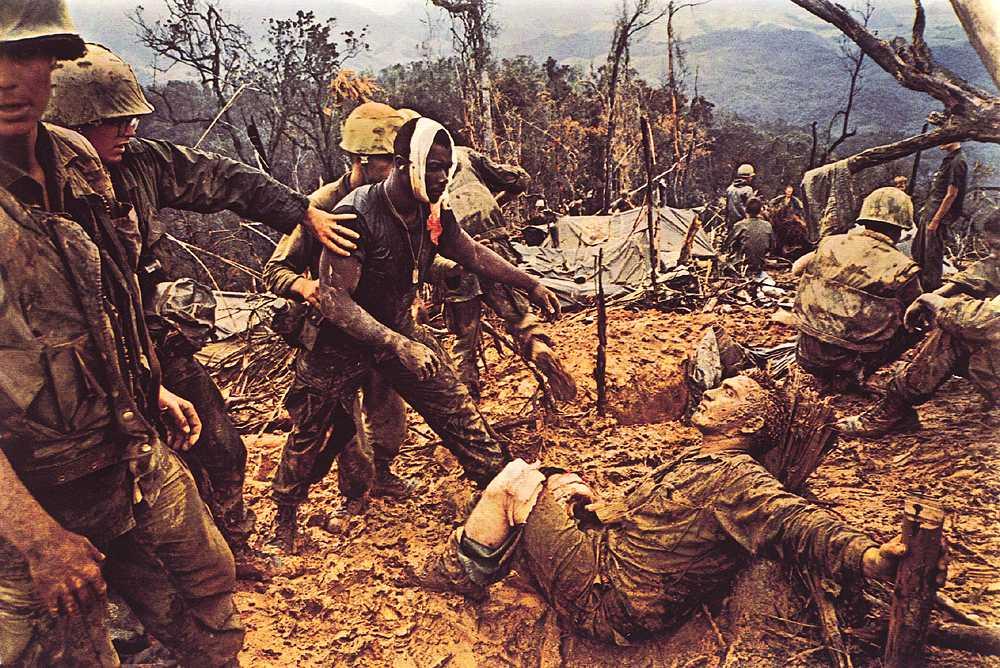 |
| Larry Burrows photo is worthy of Renaissance painting of drama and choreography From google only for education |
 |
| Van Es from google only for education |
 |
| Dickey Chapelle Photo from google only for education and art education |
Dick Ut
 |
| Dick Ut Iconic photo of Kim Phuc after Napalm bombing from google for education only |
The music and art of the period reflects the culture and mood of the times.
Click here for a list of films about the Vietnam War
Horst Faas
 |
| Photo by Horst Faas from google for education only |
Fred Waters
 |
| Fred Waters Photo from google image for education purposes only |
Frank Capa
 |
| Frank Capa famous WWII photo journalist went on to Viet Nam where he lost his life. from google image for education only |
constituted a potent archive of a new kind of photography suited to a new kind of war and produced imagery that challenged the ideology and course of the American mission, a great deal of work was produced as spot news imagery with a conventionalized form of professional practice.
There were, however, notable exceptions, photographers who worked more self-consciously to push the boundaries of photojournalistic practice. Their work reflects on the contexts and scenery of war and, while these had varied motivations and were often constrained by the broader media and state frames, they did develop the genre of photojournalism, adapting it to new conditions of warfare and technological production.
These photographers produced a more meditative form of photojournalism, an afterimagery of conflicts and contexts, bound not to spot news reporting but to a more investigative framing of events. I am thinking here of photographers such as Larry Burrows, Philip Jones Griffiths, Don McCullin, Catherine Leroy, Kyoichi Sawada and Henri Huet.
In Vietnam, photographers had opportunities to develop a fresh visual awareness about war and its representations, especially those who stayed for long periods or who came with investigative intent. Within the mass visual coverage of this war were examples o
f this new awareness, the work of photographers reflexively attuned to the style and ethos of their work as a subjective register of their relation to the war. These photographers opened up opportunities for a more expressive form of documentary representation and influenced the style of a new generation of photojournalists who emerged to prominence in the 1970s and 1980s."
article source and quote from Liam Kennedy, Clinton Institute
 |
| Propaganda Art from Vietnam from google for education |
Louis Armstrong…what a Beautiful World in concert in Vietnam
click below.
Labels:
Dickey Chapelle,
Ed Ut,
Eddie Adams,
Frank Capra,
Horst Faas,
Larry Burrows,
Paint it Black,
Poster of the Vietnam War,
protest songs Fred Waters,
Rollings Stone,
Van Es,
Vietnamese War Photo Journalists
Monday, April 7, 2014
MEMORIAL TO A JAPANESE BOB TAIL CAT
Japanese Bob Tailed cats are famous in antique Japanese woodblock prints. *clicking on highlighted words will provide you a link to more information
Many very gifted woodblock artists have included them in their
art. The Japanese Bob Tails have many unique qualities and are have an ancient linage. Their back legs are longer than the front, so they have a characteristic rabbit like hop when running or walking.
 |
| From google for education only |
 |
| Photo by Elizabeth Gordon |
 |
| Hiroshige Print From google for education only |
 |
| Note long back legs, photo of Zafer by Elizabeth Gordon |
 |
| Notice same long back legs as Zafer |
 |
| one of the characteristics is docile, Zafer had that down! |
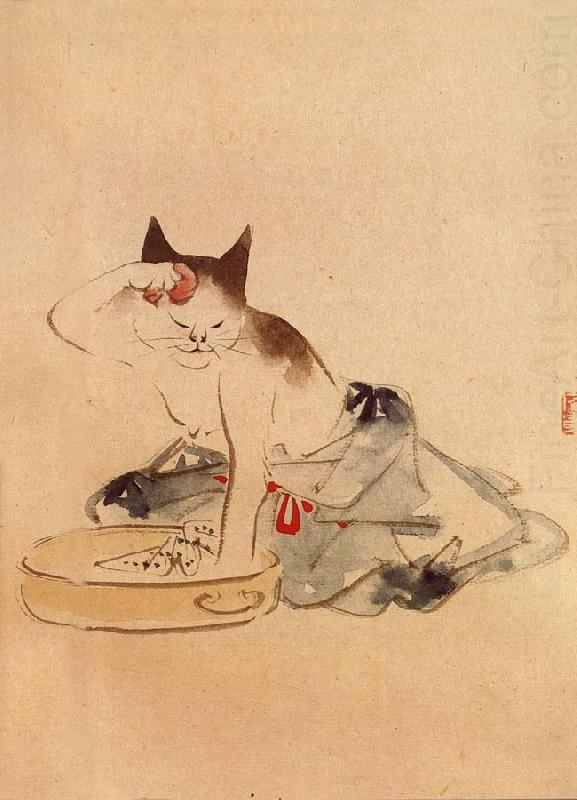 |
| Hiroshige was a master artist of the Woodblock Print, this is one of his prints of a Japanese Bob Tailed Cat from google for education only |
totally aloof. He never got overly excited about anything, he looked at it in his cool aloof Dr. Spock manner, seemingly without feeling. But that was just his Zafer Zen, because at night he became a loving sweet boy, purring and sleeping beside us or getting on our chest and rubbing our noses. He never allowed anyone outside of the family to see that side of him, he was a very private man cat. He would be as good a watch dog as Vinci, the terrier, hearing when the gate opened or a car door closed. He was alert and would always here the engine of your car and greet you by the front door when you came home. He was exceedingly fond of food and never tolerated missing a meal or his nightly treats. He tolerated the other house cats and better tolerated our dog, but he was a reclusive choosing to hang out in the garden grasses or on the bed in the sunlight.
 |
| Utagawa, Japanese Woodblock Master Artist |
He had a round pink belly, pink ears and a pink nose..like a rabbit might have. He was more panda like and rolly polly than sleek.
 This week we suddenly lost our sweet boy of 15 years, our Japanese Bob Tail. He became ill overnight, and the next day the news from the vet was terrible, "too much wrong, too much to overcome!" In two hours time we had to go from a vet visit to putting him down for humane reasons. Ann held him, and I petted him while the vet administered the drug. It went fast and just like that the life of our dear furry child was gone. 15 years of snuggles and companionship gone. But we are richer for having had one Princely Japanese Boy in our life and we will always feel loved by a special boy with a special linage…our rabbit cat!
This week we suddenly lost our sweet boy of 15 years, our Japanese Bob Tail. He became ill overnight, and the next day the news from the vet was terrible, "too much wrong, too much to overcome!" In two hours time we had to go from a vet visit to putting him down for humane reasons. Ann held him, and I petted him while the vet administered the drug. It went fast and just like that the life of our dear furry child was gone. 15 years of snuggles and companionship gone. But we are richer for having had one Princely Japanese Boy in our life and we will always feel loved by a special boy with a special linage…our rabbit cat!

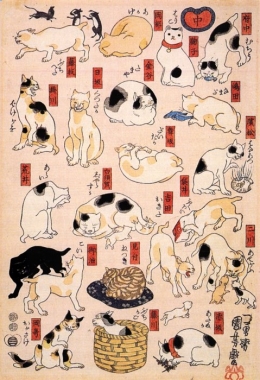 |
| Hiroshige print and drawings of the ancient Japanese Bob Tail Cat |
"There are many references to short-tailed cats in Japanese folklore, including the story of a cat whose tail caught fire from a spark from a nearby heart. The jittery cat ran hither and yon, and set fire to houses in the Imperial city. In the morning the city was razed to the ground and the Emperor, seething with anger, passed a decree that the tail of all cats was to be chopped short to prevent another mishap.
There is also the legend of maneki-neko, the "beckoning cat" that attracted many passerby; so much so, in fact, that its figure is now considered a symbol of good fortune in storefronts and homes. The facade of the Gotokuji Temple near Tokyo also depicts a representation of the cat, which seems to raise one paw as a sign of welcome.
Domestic cats came into Japan from China and Korea around the 6th century, though it is not known whether these cats possessed the hallmark short tail of the Bobtail.
In the 17th century many Bobtails roved the streets and countryside of Japan. There are even paintings and woodcut prints from the era depicting tri-colored cats with short tails. Most often referred to in Japan as mi-ke, the cats are white with bold patches or red and black. They were revered by the Japanese, who provided them with luxurious and pampered lives in temples and palaces.
However, the fate of the cats would forever be changed when the Japanese silk industry was threatened. When mice began destroying precious silk worms and cocoons on which Japanese silk industry thrived upon, the government declared that all cats be set free to counter the menace. The Bobtail, then forced to fend for itself on the street, was relegated to a common domestic cat."
source: from Pawnation article
 |
| Woodblock by Utagawa from google for education only |
Subscribe to:
Posts (Atom)

